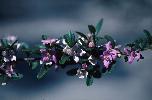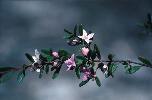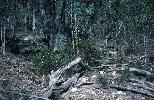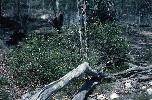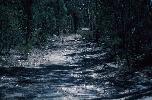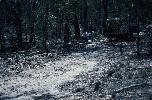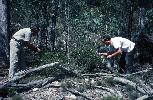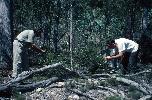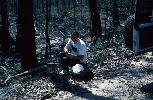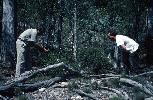Species profile—Boronia grimshawii (Grimshaw's boronia)
Classification
Plantae (plants) → Equisetopsida (land plants) → Rutaceae → Boronia grimshawii (Grimshaw's boronia)
Sighting data
Species details
- Kingdom
- Plantae (plants)
- Class
- Equisetopsida (land plants)
- Family
- Rutaceae
- Scientific name
- Boronia grimshawii Duretto
- Common name
- Grimshaw's boronia
- WildNet taxon ID
- 28273
- Nature Conservation Act 1992 (NCA) status
- CR
- Conservation significant
- Yes
- Confidential
- No
- Endemicity
- Native
- Pest status
- Nil
- Description
- Boronia grimshawii is woody shrub with many erect branches, growing 1.5 to 2.5 m tall. The branches are quadrangular, glandular tuberculate, glabrescent or with a sparse stellate indumentum between the leaf insertion point. The branchlets become glabrous with age. The leaves are simple and are 10 to 26 mm long and 4 to 10 mm wide, sometimes obviously glanded. The new leaves have a sparse stellate indumentum mainly on the midrib and margins which then become glabrous or glabrescent with age. The petiole is 1 to 2 mm long and winged. The lamina is slightly lanceolate to elliptic to slightly oblanceolate in shape and slightly discolorous. The abaxial surface of the lamina is paler, dorsiventral, flat with glandular crenulate margins. The adaxial surface is slightly glandular tuberculate, and the midrib is raised slightly. The inflorescence is 1 to 7-flowered, cymose, however only 1 or 2 flowers mature at the same time. The inflorescence is shorter than the leaves. The peduncles are 0.5 to 2 mm long, glabrescent with hairs concentrated between the decurrent bract bases. The sepals are ovate-deltate, 2.5 to 3 mm long by 1.25 to 2 mm wide, acute and not enlarging significantly as the fruit matures. The petals are pink to white, 6 to 10 mm long and 4 to 6 mm wide, enlarging slightly as the fruit matures. The cocci is 5 mm long and 2.5 mm wide, glabrous or with several simple and/or stellate hairs along the suture. The seed is 4 mm long by 2 mm wide, black and shiny (Duretto, 2003).
- Map
- View Map
- Distribution
- Boronia grimshawii is known only from an isolated 'jumpup' of duricrust near Gayndah, Queensland (Duretto, 2003; Queensland Herbarium, 2012).
- Distributional limits
- -25.7221418, 151.5032929
-25.7236112, 151.5063258 - Range derivation
- Range derived from extent of the taxon's verified records
- Habitat
- Boronia grimshawii is found at and below the crest of jumpups in association with Corymbia citriodora, C. trachyphloia, Lysicarpus angustifolius and Eucalyptus decorticans (Duretto, 2003; Queensland Herbarium, 2012)
- Reproduction
- Flowering of Boronia grimshawii has been recorded in June, September and October (Duretto, 2003; Queensland Herbarium, 2012).
- Threatening processes
- The only know population of Boronia grimshawii consists of a couple of hundred individual plants but is confined to one jumpup. This population is on private land and even though the area is unlikely to be cleared due to the nature of the soil, the species is not protected within a conservation area (Duretto, 2003).
- Status notes
- Boronia grimshawii is listed as Vulnerable under Queensland's Nature Conservation Act 1992.
- References
- Duretto, M.F. (2003). Notes on Boronia (Rutaceae) in eastern and northern Australia. Muelleria 17: 118-119.
Queensland Herbarium (2012). Specimen label information. Queensland Herbarium. Accessed 05/03/2012. - Profile author
- Lynise Wearne (05/03/2012)
Other resources
Data source
This profile data is sourced from the QLD Wildlife Data API using the Get species by ID function used under CC-By 4.0.
https://apps.des.qld.gov.au/species/?op=getspeciesbyid&taxonid=28273.
This information is sourced from the WildNet database managed by the Queensland Department of Environment and Science.


